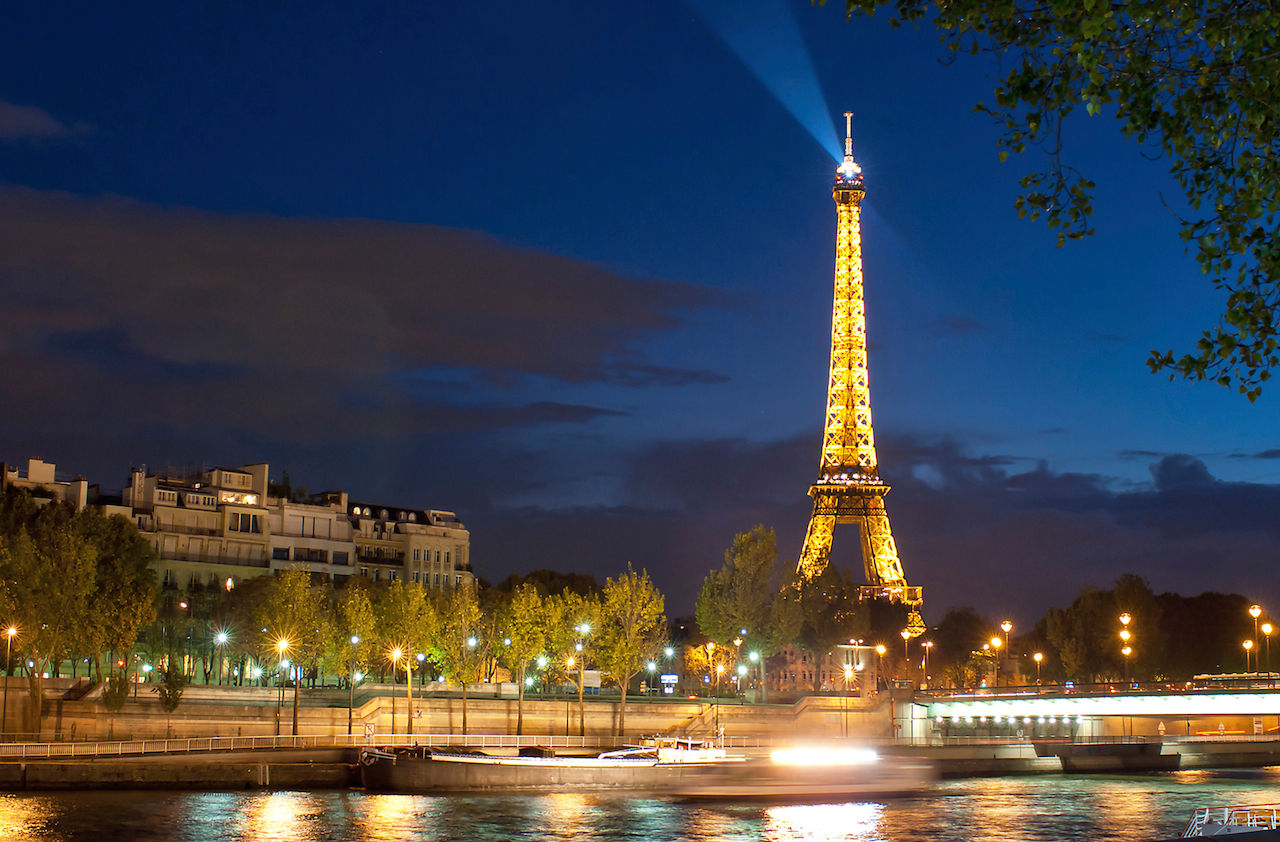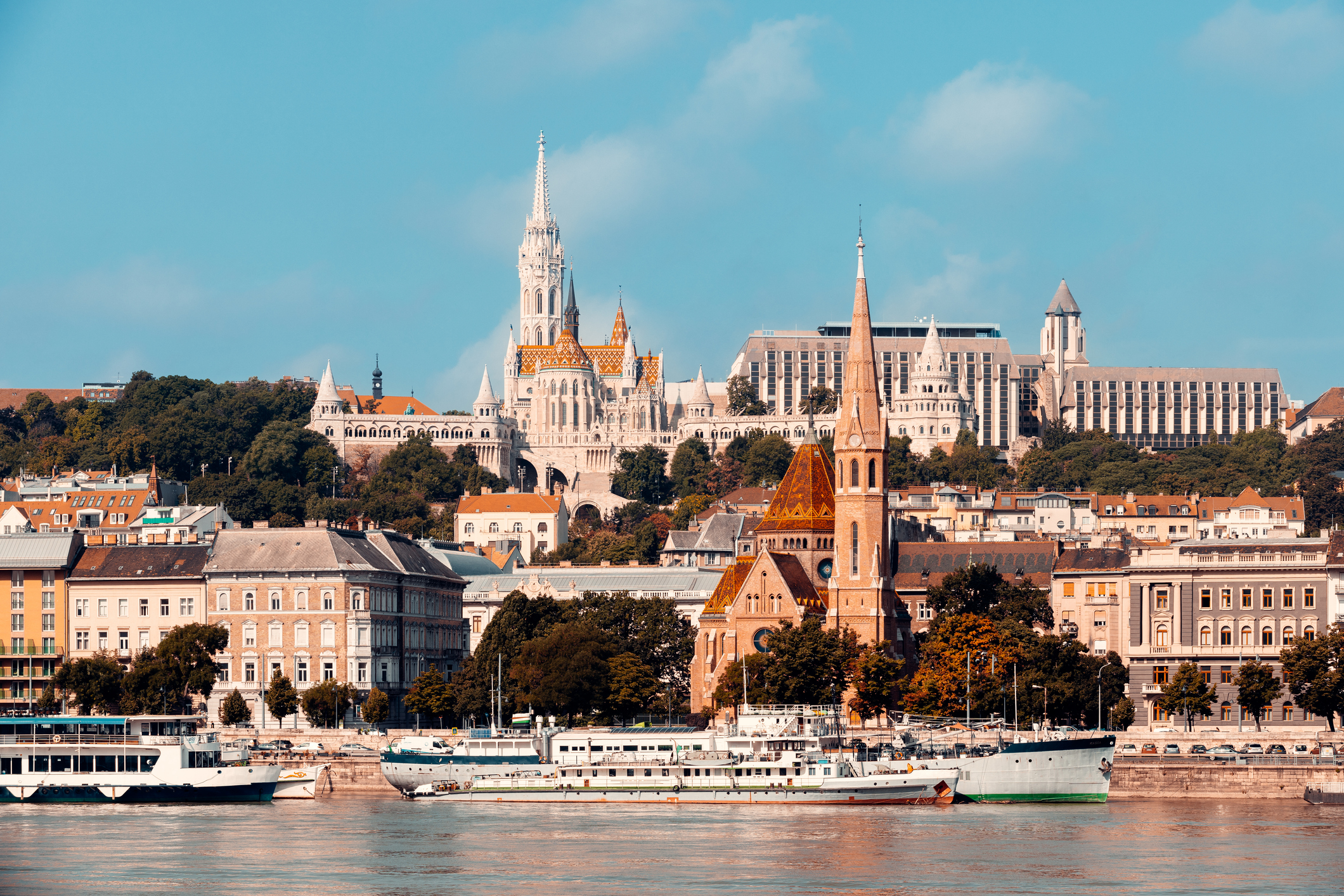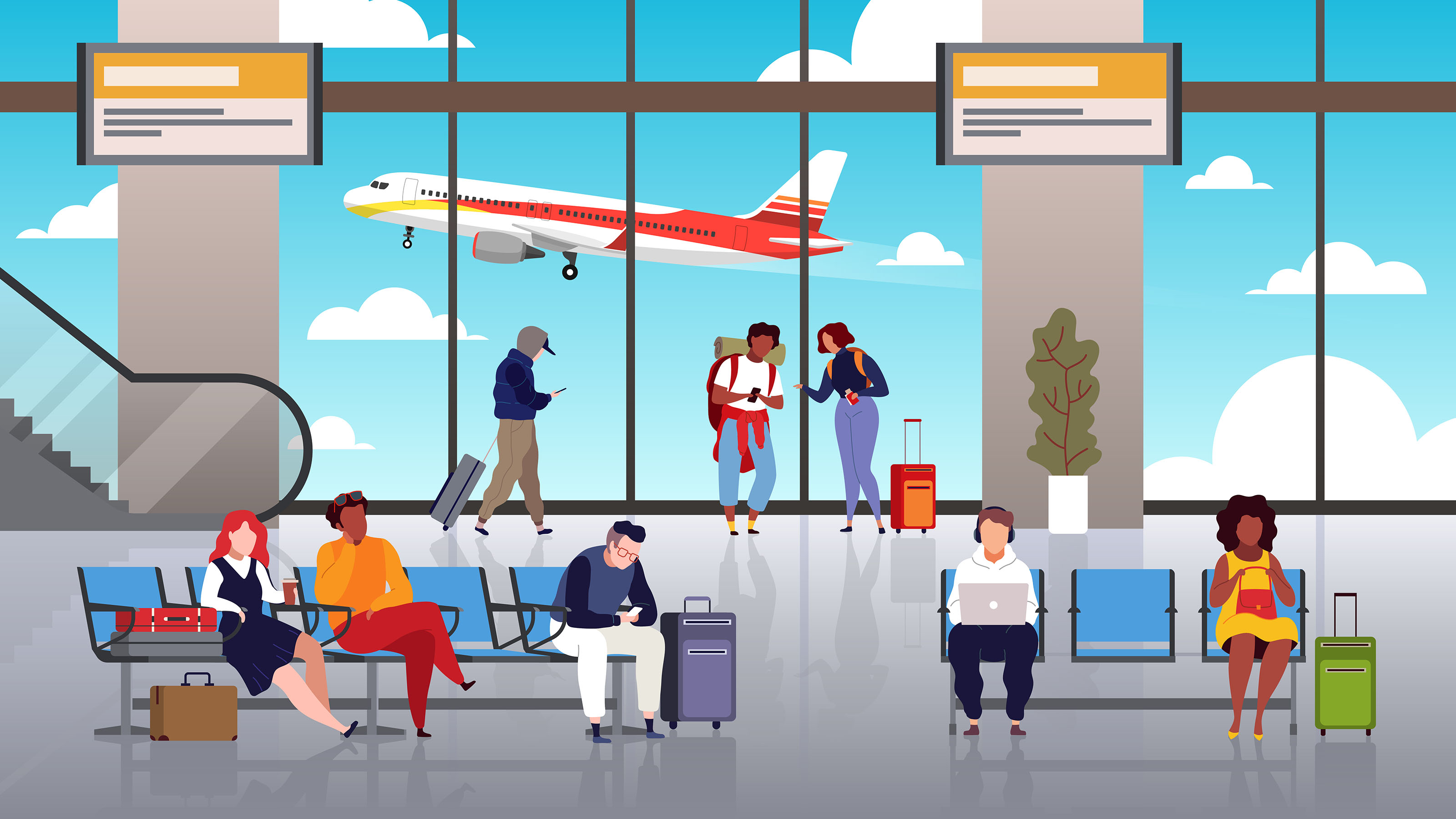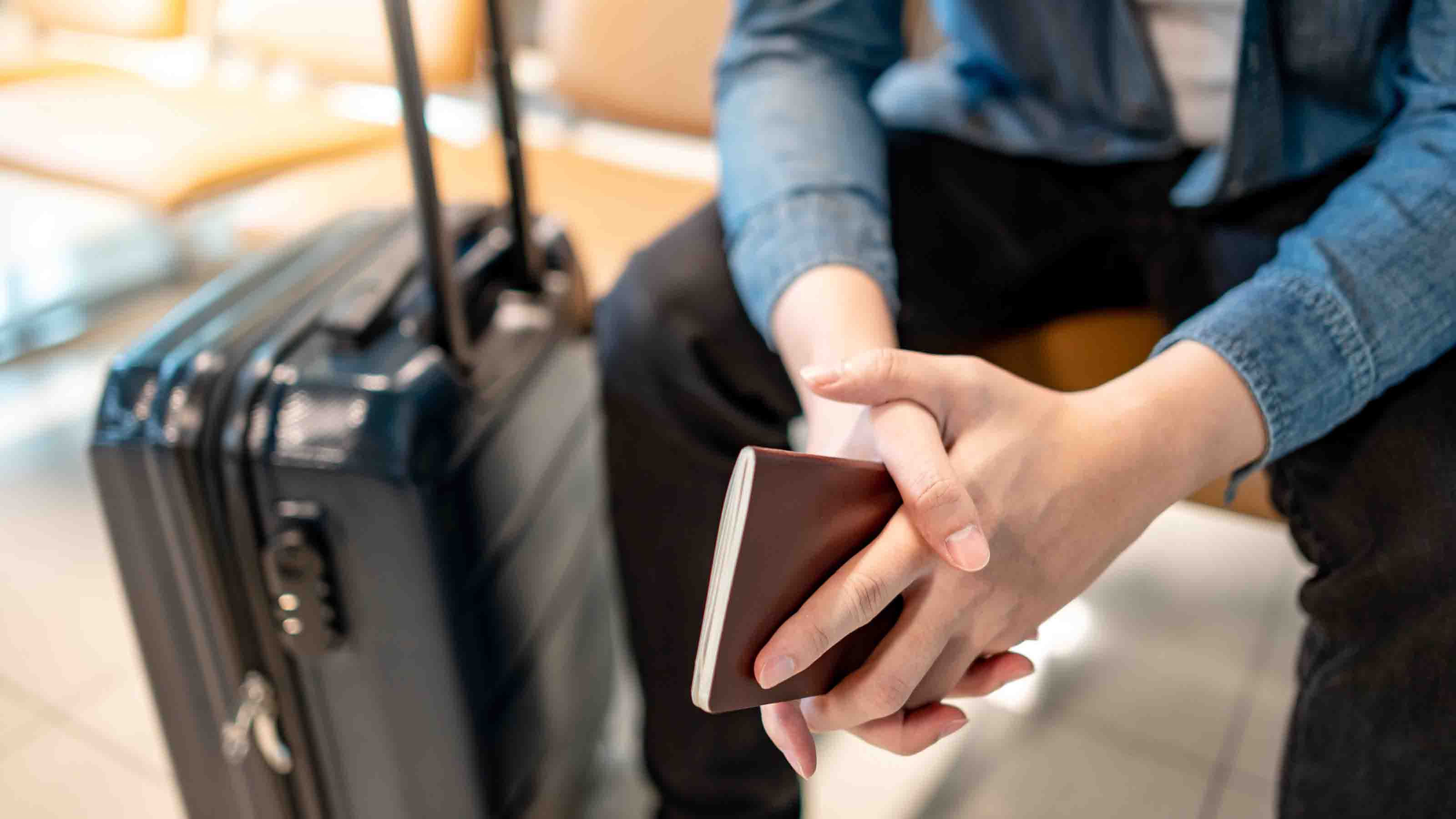Ways to Save Money In Paris
It can be an expensive place to visit. Here are 11 ways to keep costs down.


Paris, the City of Light. Too bad it’s not exactly light on the wallet. After having spent a few months living there, the French capital is without a doubt my favorite city. And while it’s not too hard to convince people to want to go to Paris, it’s a tad more difficult to convince them that they don’t have to go broke doing so. So to help those with dreams of seeing the Eiffel Tower and Champs-Élysées on a budget, here are my 11 favorite money-saving tips.
Book hotels outside the city center. Generally speaking, the closer you get to the center of town, the more expensive real estate becomes. To save on lodging, pick a hotel in a less central neighborhood (arrondissement). For instance, a standard room at a Holiday Inn in Paris near Notre Dame (about as central as you can get) is going for $320 (€234) per night in early April. By comparison, a standard room at the Place d’Italie location in the 13th arrondissement is just $213 (€156) per night. Likewise, the standard room at the Gare de l’Est hotel in the 10th arrondissement is $230 (€168) per night. Both are less than two miles away from Notre Dame on foot, and both are incredibly close to metro stops -- though I can attest that the walk from Place d’Italie to Notre Dame through the famous Latin Quarter is quite lovely. (Prices are based on a conversion rate of €1 = $1.37.)
Buy a multiday metro pass. A one-way ride on a metro train or RER train in Zone 1 will cost about $2.30 (€1.70). But if you expect to ride multiple times per day, a Passe illimité (unlimited travel ticket) or Navigo Découverte card will be the way to go. Unlimited passes are available from all metro ticket machines and manned ticket booths, and they offer unlimited rides for one day ($15/€10.85), two days ($24/€17.65), three days ($33/€24.10) or five days ($47/€34.70) in Zones 1 through 3, with reduced prices for children. The one-day pass pays for itself after six rides, the two- and three-day passes make sense after about five rides a day, and the five-day pass is the way to go if you’ll ride more than four times a day.

Sign up for Kiplinger’s Free E-Newsletters
Profit and prosper with the best of expert advice on investing, taxes, retirement, personal finance and more - straight to your e-mail.
Profit and prosper with the best of expert advice - straight to your e-mail.
Navigo cards can also be purchased in most metro stations; make sure to have the $7 (€5) card fee and a small photo (such as an extra passport photo) to hand over. Navigos are good for a full week at a time, but the week always starts on Monday. So if you get to Paris midweek, it’s best to pay for single rides or buy an unlimited pass until Monday rolls around again. The Navigo Découverte is $28 (€20.40) for access to Zones 1 through 2 for the week. When you add the card fee, the Navigo pays for itself after 15 rides, or about two rides per day.
If you don’t think you’ll ride the metro that much, another option is to buy a book of ten tickets (carnet de 10) for $19 (€13.70), which drops the cost to $1.90 (€1.37) per ticket. But when you consider that a train ride from, say, the Eiffel Tower to the Centre Pompidou will cost $2.30 (or less), compared with approximately $120 (€14.50) for a cab, it only makes sense to take the metro.
Rent a bike. Get some fresh air and get around town in mild weather with the Vélib' bike share program. You’ll be able to rent a bike from any of the 1,800, 24-hour, self-service kiosks, then return it to the same station or any other.
Subscribe online at the Vélib' Web site or at any of the terminals using your credit card. (Some locations accept only chip-enabled cards.) These temporary memberships cost $2.30 (€1.70, or about the same as one metro ride) for a day or $11 (€8, or about four metro rides) for a week. Rides of 30 minutes or less are free, but after that it’s $1.40 (€1) for the first additional half hour, $3 (€2) for the second additional half hour and $5.50 (€4) for every half hour after that. The additional charges are automatically deducted from the card you signed up with.
Buy a museum pass. Take advantage of 60 museums and monuments around town with a Paris Museum Pass, which offers unlimited entry for two days ($57/€42), four days ($76/€56) or six days ($94/€69), without having to wait in line. Entrance fees to Parisian landmarks range from about $9.50 to $27 (€7 to €20). So the two-day pass will save money if you think you’ll visit about four or more sites in those two days. To make the four-day pass worthwhile, you’ll need to visit one or two sites a day, and the six-day pass starts saving you money after one site a day. See where to buy a Paris museum pass.
Note free museum days. If your trip happens to coincide with the first Sunday of the month, the Journées du Patrimoine (national heritage days in September) or the Nuit Blanche (an all-night art festival in October), then you’re in luck. Most of the museums in Paris are open free of charge on those days. Check out a list of museums you can visit free on first Sundays from Time Out Paris.
Skip the top of the Eiffel Tower. Want to get a view of Paris from on high? Do so from the steps of the Sacré Cœur at the top of Montmartre -- it’s free. If you still want to say you climbed the Eiffel Tower, get a ticket for the second-floor observation deck. While a trip to the top will cost an adult $20 (€15), second-floor access is just $12 (€9) for adults and $10 (€7.50) for youths. If you’re okay with a little exercise, take the stairs instead of the elevator and the ticket price drops to $7 (€5) for an adult and $5.50 (€4) for a youth. Speaking of youth…
[page break]
Young? You’re in luck. Paris is extra wallet-friendly if you’re under 26 years old. You can find youth discounts on everything from food to museums to transportation. Some fast food/quick service restaurants (think KFC here) offer discounted meals if you’re really in a pinch. At the Louvre, admission is always free for those younger than 18, and for those between 18 and 25 it’s free on Friday nights. The Musée d'Orsay is also free to those under 18, and it offers discounted tickets all day to 18-to-25-year-olds. Plus, on Saturday and Sunday, youth metro tickets are just $5 (€3.75) and can be used for the whole weekend. So always be sure to ask if there’s a youth discount.
Make lunch your main meal. In France, sharing plates of food is frowned upon, as is ordering appetizers as entrées, so don’t try to save money that way. Instead, you can actually enjoy a multi-course meal to save a few euros. This is especially true at lunchtime, when restaurants try to lure locals with inexpensive meal deals. These fixed price menus (called formules or menus in French) offer an appetizer and entrée (note that in French, “appetizer” is entrée and “main course” is plat), or an main course and dessert, or sometimes all three, for one set price that’s usually cheaper than ordering à la carte -- usually less than $27 (€20.)
Also, don’t get trapped spending money on water to accompany your meal. When asked what you’d like to drink, simply order a carafe d’eau (or pitcher of water) to avoid being brought, and charged for, bottled water.
Don’t ignore “fast” food. No, I don’t mean McDonalds. Paris has plenty of cheap, quick meal options that blow Mickey D’s out of the water. For two or three euros, you can enjoy a crepe cooked street-side with fillings such as jam, sugar or Nutella. A couple of extra euros turns it into a hefty meal, stuffed with ham and cheese, tuna, or other savories. Au P’tit Grec on the Rue Mouffetard is a personal favorite. For about five euros, you can tuck into a heaping falafel from L’As du Fallafel, regarded as one of the city’s best. Or get a baguette sandwich from any of the countless boulangeries across the city. There’s a flavor to please every palette (even vegetarians), though ham and butter (jambon-beurre) and ham and cheese (jambon-fromage) are the classics.
Just want a snack? A baguette will run about one euro, and you can usually get just half (demi-baguette) for 50 cents. Late at night, locals turn to kebabs to soak up the evening’s vices. For just another five euros or so, you can chow down on a pita loaded with shaved meat and fries. For a meat-in-a-pouch fix, I recommend a shish taouk from Au Vieux Cédre on Rue Blainville.
Fun fact: There’s even free couscous or mussels to be had at a handful of bars around town. Here are a couple of places to try.
Visit during the off-season. You may love Paris in the springtime, but so does everybody else. Late spring through summer are the peak tourist times, and they usually come with peak flight prices. If you can bear the chill and some cloudy skies, plan to visit in the fall or in winter after the holidays. (Flights are reasonable in August, but note that France is on vacation that month and you’re likely to find many things closed.) Hotwire’s TripStarter shows average roundtrip airfares as low as $800 from New York City in January; they approach $1,500 in May. January through March is the best time to visit, Hotwire shows, but note a slight price spike around Valentine’s Day (of course). Use Hotwire’s TripStarter tool to see airline pricing trends from your city.
Take public transportation to and from the airport. A cab from Charles de Gaulle will run about $48 (€35), and a cab from Orly (which handles very few flights from the U.S.) goes for about $36 (€26), according to TaxiFareFinder.com. However, the direct ride from Charles de Gaulle on the RER is only $13 (€9.50), and a ride on the Roissybus is $14 (€10). To get to Orly you can take the Orlybus for $10 (€7.20), or you can take the RER plus the Orlyval shuttle train for $15 (€10.90). Check out your Paris airport transportation options .
Get Kiplinger Today newsletter — free
Profit and prosper with the best of Kiplinger's advice on investing, taxes, retirement, personal finance and much more. Delivered daily. Enter your email in the box and click Sign Me Up.

-
 Stock Market Today: Stocks Soar on China Trade Talk Hopes
Stock Market Today: Stocks Soar on China Trade Talk HopesTreasury Secretary Bessent said current U.S.-China trade relations are unsustainable and signaled hopes for negotiations.
By Karee Venema
-
 2026 Disney Dining Plan Returns: Free Dining for Kids & Resort Benefits
2026 Disney Dining Plan Returns: Free Dining for Kids & Resort BenefitsPlan your 2026 Walt Disney World vacation now. Learn about the returning Disney Dining Plan, how kids aged three to nine eat free, and the exclusive benefits of staying at a Disney Resort hotel.
By Carla Ayers
-
 Five Ways to a Cheap Last-Minute Vacation
Five Ways to a Cheap Last-Minute VacationTravel It is possible to pull off a cheap last-minute vacation. Here are some tips to make it happen.
By Vaishali Varu
-
 Best Places to Visit Where the Dollar Is Strong
Best Places to Visit Where the Dollar Is StrongFrom the Americas and Europe to Africa and Asia, we list the 10 best places to travel to where the U.S. dollar is the strongest.
By Quincy Williamson
-
 24 Best Travel Websites and Apps to Find Deals and Save You Money
24 Best Travel Websites and Apps to Find Deals and Save You MoneyTravel Use Kiplinger's guide to the best travel websites and find discounts and deals so you can vacation without breaking the bank.
By Rivan V. Stinson
-
 Five Ways to Save on Vacation Rental Properties
Five Ways to Save on Vacation Rental PropertiesTravel Use these strategies to pay less for an apartment, condo or house when you travel.
By Cameron Huddleston
-
 How to Avoid Annoying Hotel Fees: Per Person, Parking and More
How to Avoid Annoying Hotel Fees: Per Person, Parking and MoreTravel Here's how to avoid extra charges and make sure you don't get stuck paying for amenities that you don't use.
By Cameron Huddleston
-
 Frequent Flyer Tax Could Raise Billions for Climate
Frequent Flyer Tax Could Raise Billions for ClimateCould taxing frequent flyers help combat global pollution? Some climate scientists say yes.
By Kelley R. Taylor
-
 How to Make The Most of a Travel Insurance Claim
How to Make The Most of a Travel Insurance ClaimMore travelers are buying insurance. If your trip is canceled, take these steps to increase your chances of recovery.
By Susan J. Wells
-
 Despite Cancelled Flights and Short-Staffed Hotels, Americans Are (Sort of) Traveling Again
Despite Cancelled Flights and Short-Staffed Hotels, Americans Are (Sort of) Traveling AgainBusiness Travel Thanks to high gas prices, cancelled flights and labor shortages across the sector, the post-COVID travel recovery looks uneven.
By Sean Lengell